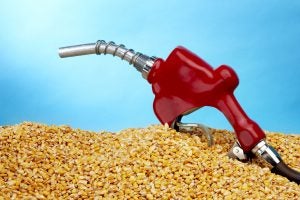At yesterday’s Advanced Bioeconomy Leadership 2023 Conference in San Francisco, the National Corn Growers Association announced the Consider Corn Challenge IV winners.
Four winners were chosen, each with a unique way to improve a product or process using feed corn to produce biobased materials. The total prize pool for the fourth iteration of the contest was $250,000. Each of the four winners received $62,500.
“The Consider Corn Challenge fosters innovative collaborations between corn farmers and industry, which paves the way for new products, chemicals, and applications. This year’s winners have continued to demonstrate corn’s adaptability,” said Director of Market Development Sarah McKay. “And corn’s unique versatility can be witnessed in the showcase of their diverse approaches and applications. This contest continues to highlight the fact that U.S. corn is an extremely flexible feedstock suited for biobased products.”
The four winners for the Consider Corn Challenge IV
Bluestem Biosciences Inc. has developed novel yeast biology for the sustainable anaerobic bio-production of 3-Hydroxypropionic acid (3-HP), a chemical intermediate for the acrylates chemical family, a $25B total addressable market.
This strategic platform molecule serves a variety of consumer end markets, like personal care products, paints, and coatings. Bluestem will leverage its novel yeast biology through the retrofit of underutilized existing shuttered ethanol production facilities across the U.S. Bluestem’s anaerobic biology is intended to mimic ethanol production, creating numerous economic benefits while supporting the rural Midwest economy and agricultural communities.
Additionally, Bluestem’s technology reduces dependence on petroleum for feedstock currently used in chemical production. It relies on corn as the primary feedstock while reshoring supply chains back to the United States.

Pennsylvania State University’s technology utilizes both corn starch and corn oil for applications in energy storage in lithium batteries. Corn starch will be evaluated for conversion into both hard and soft carbons; corn oil will be evaluated for conversion into a soft carbon.
The carbon materials will be characterized for structure by a suite of material characterization methods, including transmission electron microscopy, X-ray diffraction, and Raman spectroscopy.

Nexceris has developed a new sugar-to-chemicals process that uses renewable dextrose to make industrial chemicals instead of oil or gas and can cut CO2 emissions by greater than 85 percent Sugar2X uses state-of-the-art reactors and a new catalyst design to operate continuously on a dextrose, a domestic, renewable feedstock, with established rail transport, and clean H2 from electricity.
The technology also strongly benefits American farmers and rural communities by converting sugars to renewable chemical products that can be cost-competitive with existing fossil-based processes, allowing market forces to improve commodity corn prices and demand that drives this value stream.
Maizly has developed the world’s first corn-based milk alternative, called Maizly Original. Not only does Maizly Original look like dairy milk, but it claims to have a similar mouthfeel to dairy milk and a complementary taste profile not to impact the flavor of the underlying beverage or cereal.
“Finding new uses for corn is a key priority for NCGA,” said Ohio farmer and Market Development Action Team Vice Chair Dennis Vennekotter. “The Consider Corn Challenge provides a unique opportunity to harness the potential of corn as a versatile, sustainable feedstock. It not only showcases the ingenuity of participants but also fosters vital collaborations between industry and corn producers, paving the way for innovative, market-driven solutions.”
»Related: Op-ed: Biofuels don’t steal land from food producers


